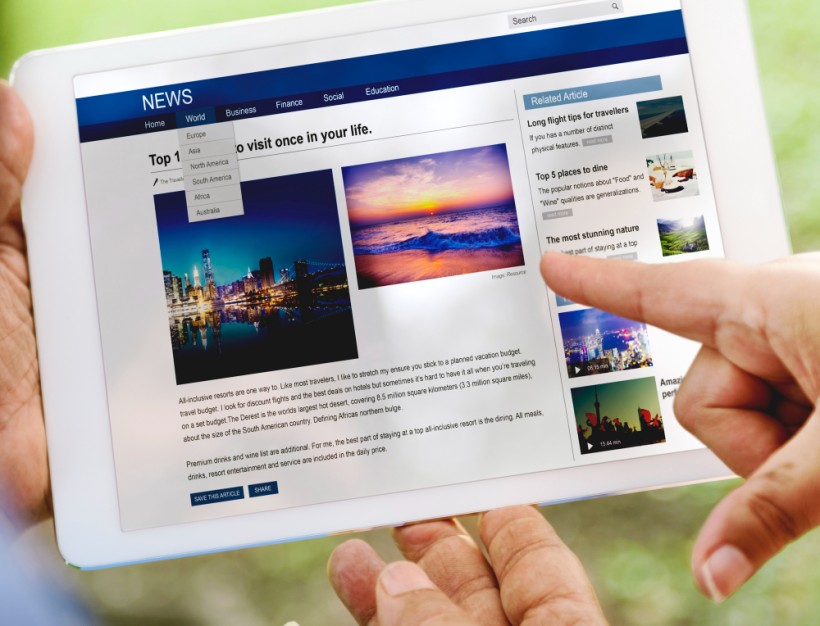B2B social media plays by different rules. You’re not selling sneakers or coffee subscriptions; you’re building trust with people making careful, high-stakes, often expensive decisions. The path from post to purchase is longer, with more voices and steps along the way.
Social media now plays a central role in that process. About 75% of B2B buyers use it to guide their decisions, which means every post, comment, and conversation shapes how they see your brand and what it stands for.
This guide shows how to make social meda work for you.
How to Build a Strong Foundation for Your B2B Social Media Strategy
Define clear goals
Start with what matters most to your business, not just what looks good on a dashboard. Use the SMART framework, be specific, measurable, attainable, relevant, and time-bound to set goals that guide your social activity.
For example:
- Grow qualified leads by 20% in six months.
- Increase engagement from industry professionals by 15%.
- Drive 30% more traffic to your resource pages.
These goals give direction. They help you measure what’s working and avoid chasing vanity metrics like follower counts.
Understand your audience
B2B social media only works when you know who you’re talking to. Define your audience by their role, industry, and the challenges they face. Think about where they look for insights, what kind of content earns their attention, and which tone — practical, analytical, or conversational — feels natural to them.
The better you understand these details, the easier it becomes to create content that feels relevant instead of random.
Audit competitors and find your space
Study how competitors use social media. What topics do they focus on? What’s missing from their conversations? This helps you find your “white space” — the angles or perspectives your brand can own.
You can use tools like LinkedIn analytics or social listening platforms to see what’s performing well in your industry. Look for opportunities to add something new rather than echo what’s already being said.
Choose the right platforms
You don’t need to be everywhere, you need to be where your audience actually is. LinkedIn remains the most valuable platform for B2B marketers, but YouTube, X (formerly Twitter), and even Instagram or TikTok can be effective when used with purpose.
The key is focus. It’s better to do two platforms well than to stretch across five without consistency. Each one demands its own approach, tone, and rhythm.
How to Create a B2B Social Media Content Strategy That Drives Engagement
After setting your goals and knowing who you’re speaking to, the next step is shaping the message itself. Strong content goes beyond staying active. Where to start:
Map your content to the buyer journey
Not everyone you reach is at the same stage. Some are just learning about your brand, others are comparing solutions, and a few are nearly ready to make a decision. A clear structure keeps your content focused on what matters at each point.
Here’s a simple way to think about it:
- Awareness: content that introduces your brand and point of view. This includes industry insights, short videos, behind-the-scenes posts.
- Consideration: content that teaches like case studies, how-to guides, or product explainers that help people see what makes your solution work.
- Decision: content that builds confidence like testimonials, customer stories, and proof of results.
Following this flow turns your feed into a system that attracts, informs, and converts rather than a mix of disconnected posts.
Experiment with formats
B2B audiences don’t want endless white papers dressed up as posts. They respond to variety. Short-form video and quick visual stories perform especially well right now because they’re easy to consume and share. But articles, polls, carousels, and infographics still hold value when used with intention.
Lo-fi videos filmed on a phone often outperform highly produced ones because they feel natural and real. A mix of planned and spontaneous content keeps your brand visible without feeling mechanical.
Focus on substance, not sales
B2B social works best when you teach, not pitch. Instead of posting constant product updates, show how your team thinks, solves problems, and approaches your industry. Share insights, frameworks, and lessons learned from real projects.
Audiences remember the brands that help them before asking for attention in return.
Stay consistent
Momentum is everything. Algorithms reward regular posting, but more importantly, so does your audience. Create a 30 or 60-day content calendar to plan your themes, campaigns, and publishing rhythm.
Consistency doesn’t mean being rigid, it means showing up reliably. Even a few posts a week, done well, can build a rhythm that your audience begins to expect.
How to Develop a Human Brand Voice for B2B Social Media
The instinct is to sound formal, safe, and “professional.” But sounding too polished can make your message forgettable. Here are some ways to avoid that:
Keep it conversational
Professional doesn’t have to mean stiff. Even C-level executives prefer brands that sound natural. In fact, 64% of executives say they’re drawn to companies with a more human, less formal tone of voice.
Write like a person, not a press release. Use everyday language. Avoid jargon unless your audience truly speaks it. “We help teams move faster” is more inviting than “We deliver enterprise-grade workflow optimization solutions.”
Show personality through perspective
Your tone is part of your brand identity. Let it reflect what your company stands for. Are you:
- Curious and creative?
- Analytical and thoughtful?
- Calm and confident?
Those traits should come through naturally in your writing, visuals, and responses.
Avoid the robotic middle ground
There’s a danger zone between “too casual” and “too formal.” — The robotic middle where most B2B content lives. It’s polished enough to be safe but bland enough to be ignored. Don’t fall into that trap.
It’s fine to be warm, even slightly witty, as long as your tone stays aligned with your brand. The occasional light touch, like acknowledging a common frustration or industry joke, can make your content more relatable and shareable.
How to Use AI in B2B Social Media Marketing Without Losing Authenticity
AI has become part of almost every marketer’s toolkit, and for good reason. It can speed up research, surface insights, and help you stay consistent. But when it comes to B2B social media, it’s best used as a co-pilot, not a replacement for real judgment or creativity.
Use AI to support your process, not to skip steps. It’s great for generating ideas, drafting outlines, summarizing reports, or analyzing performance data. These tools remove friction, but they shouldn’t shape your brand’s voice. Let them help you start faster, not publish faster. Your audience can tell when something’s written with care versus when it’s just filling space.
AI can predict trends, but it doesn’t understand context. It can’t tell when humor lands or when a post feels off. That’s why the human filter still matters most. Data and AI should make your work sharper and more efficient, but the perspective and judgment that make social media feel real have to come from you.
3 Ways to Increase B2B Social Media Reach and Engagement
With your content and voice in place, the next step is making sure people actually see and engage with it. Here’s how:
1. Turn employees into advocates
Your team can be your most powerful amplifier. People trust people more than logos, and posts shared by employees often perform far better than those from company pages. Encourage your team to share company updates, celebrate wins, and add their own insights.
According to Forbes, employee advocacy can expand your reach up to 561% and increase engagement eightfold. That’s because it feels authentic, real people sharing real experiences.
To make it easy, create ready-to-share content or simple prompts for your team. A short comment or personal take often goes further than a polished repost.
2. Partner with credible voices
B2B influencers aren’t just for tech brands or big budgets. They can be consultants, analysts, or respected professionals with engaged audiences in your industry. Collaborating with them can give your message credibility and access to networks that already trust them.
Start with experts who genuinely align with your brand’s expertise and tone. Even small collaborations like co-hosted webinars or joint posts can have a lasting effect.
3. Balance organic and paid
Organic content builds credibility; paid promotion builds scale. Together, they work best. Boost top-performing posts to reach decision-makers who fit your audience profile, or promote campaigns tied to key reports, events, or product launches.
Use targeting tools on platforms like LinkedIn to refine your reach by role, industry, or company size, so you’re not paying for empty impressions.
The goal isn’t just to get seen, but to stay relevant to the people who matter most.
How to Measure and Improve Your B2B Social Media Performance
Even the best B2B social media strategy needs regular tuning. Measurement isn’t just about proving success, it’s how you learn what’s working, what’s wasting effort, and where to focus next. The right data helps you make smarter decisions, not just prettier reports.
Track what actually matters
Follower growth and impressions look nice, but they don’t tell the full story. Focus on metrics that tie back to your goals like:
- Engagement rate: shows whether your audience cares about what you post.
- Click-through rate (CTR): reveals if your content motivates action.
- Leads and conversions: link your social efforts to tangible results.
- Audience quality: helps confirm you’re reaching the right people, not just more people.
Most effective B2B marketers use these deeper metrics to guide decisions, rather than surface-level numbers like reach or follower count.
Review and adjust regularly
Set aside time each month, or at least once per quarter, to review your performance:
- Which topics drive conversation?
- What post formats get the most engagement?
- Are you seeing steady traffic from social to your site?
Small adjustments can lead to major improvements. You might find that thought-leadership posts get high engagement but low click-throughs, or that short videos outperform long-form articles. Use that insight to refine your next content cycle.
Let insights shape your next move
Data is only useful when you act on it. Let your findings inform what comes next, whether that means doubling down on what works, testing a new format, or dropping a tactic that doesn’t deliver.
Consider keeping a simple scorecard of each platform and content type. Over time, you’ll start to see patterns that guide your content calendar and make planning faster and more intentional.
Clarity Beats Volume in B2B Social Media
B2B social media works best when it feels human. The goal isn’t to post endlessly but to show up with clarity and purpose. Every piece of content should help someone, not just fill space on a feed.
Consistency also builds trust. When you understand your audience, focus on the right platforms, and keep your message steady, you create visibility that lasts and credibility that converts.
But start small. Review what you’re doing now, set clear goals, and plan your next 30-90 days with intention. Real progress comes from steady, thoughtful effort.
Column helps B2B leaders and teams turn consistency into impact by building a presence that attracts the right audience, earns credibility, and drives measurable results. Reach out today to start your next campaign.

Johnson is a Content Strategist at Column. He helps brands craft content that drives visibility and results. He studied Economics at the University of Ibadan and brings over years of experience in direct response marketing, combining strategy, creativity, and data-backed thinking.
Connect with him on LinkedIn.





